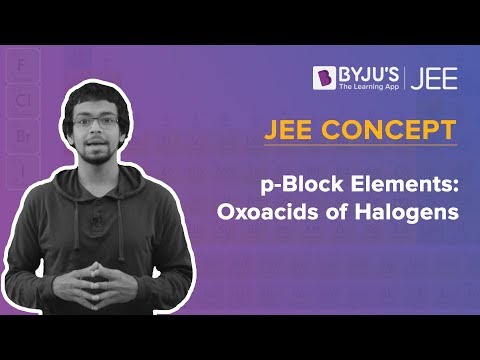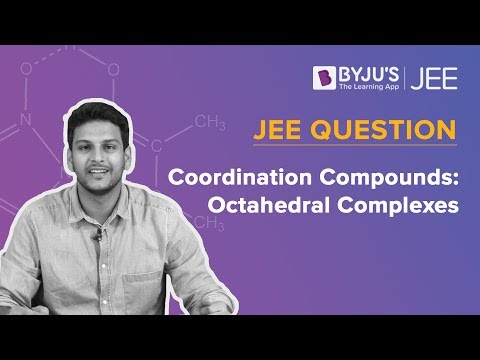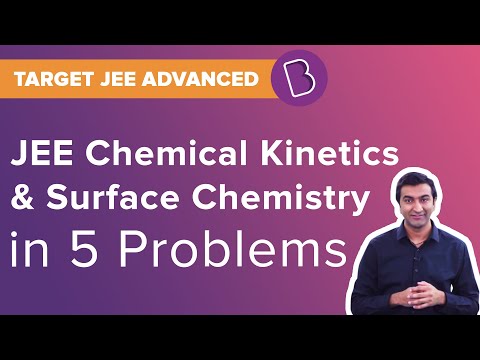1) 2
2) 4
3) 3
4) 5
Answer: (3)
Fourth & Fifth I.E. are very high (periodic properties) indicating the presence of three valence shell electrons.
1) Manganate and permanganate ions are tetrahedral
2) In manganate and permanganate ions, the -bonding takes place by the overlap of p orbitals of oxygen and d-orbitals of manganese
3) Manganate and permanganate ions are paramagnetic
4) Manganate ion is green in colour and permanganate ion is purple in colour
Answer: (3)

Question 3: Match the following drugs with their therapeutic actions:
(i) Ranitidine (a) Antidepressant
(ii) Nardil (Phenelzine) (b) Antibiotic
(iii)Chloramphenicol (c) Antihistamine
(iv) Dimetane (Brompheniramine) (d) Antacid
(e) Analgesic
1) (i)-(d); (ii)-(a); (iii)-(b); (iv)-(c)
2) (i)-(d); (ii)-(c); (iii)-(a); (iv)-(e)
3) (i)-(a); (ii)-(c); (iii)-(b); (iv)-(e)
4) (i)-(e); (ii)-(a); (iii)-(c); (iv)-(d)
Answer: (1)
1) liquid diethyl ether to aqueous NaCl solution
2) sodium stearate to pure toluene
3) excess water to liquid

4) excess water to liquid

Answer: (3)
The ionic micelles formed by the addition of water to soap {sodium stearate}.
Question 5: Among the statements (I–IV), the correct ones are:
(I) Be has a smaller atomic radius compared to Mg.
(II) Be has higher ionization enthalpy than Al.
(III) Charge/radius ratio of Be is greater than that of Al.
(IV) Both Be and Al form mainly covalent compounds.
1) (I), (II) and (IV)
2) (I), (II) and (III)
3) (II), (III) and (IV)
4) (I), (III) and (IV)
Answer: (1)
Refer S-Block
1) [Cr(H2O)5Cl]Cl2 .H2O
2) [Cr(H2O)4Cl2]Cl.2H2O
3) [Cr(H2O)3Cl3].3H2O
4) [Cr(H2O)6]Cl3
Answer: (2)
Let x molecule of water are lost then
13.5 = {[x × 18] / [6 × 18 + 3 × 35 + 52]} * 100
x = 1.99 ≃ 2

1) (III) > (II) > (IV) > (I)
2) (IV) > (II) > (III) > (I)
3) (II) > (III) > (IV) > (I)
4) (II) > (III) > (I) > (IV)
Answer: (3)

1) Benzaldehyde < Propanal < Propanone < Butanone
2) Propanal < Propanone < Butanone < Benzaldehyde
3) Butanone < Propanone < Benzaldehyde < Propanal
4) Benzaldehyde < Butanone < Propanone < Propanal
Answer: (3)
Rate of Nucleophilic addition Aldehyde > Ketone Aliphatic aldehyde > Aromatic aldehyde

Answer: (3)

Question 10: The incorrect statement(s) among (a) – (d) regarding acid rain is (are):
(a) It can corrode water pipes.
(b) It can damage structures made up of stone.
(c) It cannot cause respiratory ailments in animals
(d) It is not harmful for trees
1) (a), (b) and (d)
2) (a), (c) and (d)
3) (c) and (d)
4) (c) only
Answer: (3)
Acid rain can cause respiratory ailments in animals and also harmful to trees and plants.

Answer: (3)

initially pH will be acidic < 7
at eq pH pH = 7
& finally pH will be basic > 7

1) 13 has a half-filled valence subshell
2) 9 is the first alkali metal
3) 8 is the first noble gas
4) 6 has a 2p-valence subshell
Answer: (1)
(1) 13X = 1s2 1p6 1d5 – half filled
(2) 9X = 1s2 1p6 1d1 – not alkali metal
(3) 8X = 1s2 1p6 – Second nobel gas
1) t42g e2g and t62g eog
2) t62g eog and t62g eog
3) t42g e2g and t42g e2g
4) t62g e0g and t42g e2g
Answer: (4)


(a) (B) is more likely to be crystalline than (A)
(b) (B) has a higher boiling point than (A)
(c) (B) dissolves more readily than (A) in water
Identify the correct option from below:
1) (a) and (c) is true
2) only (a) is true (3) (b) and
3) are true
4) (a) and (b) are true
Answer: All answers are correct.
1) 0.85 and 0.5
2) 0.85 and 0.25
3) 1.7 and 0.25
4) 1.7 and 0.5
Answer: (4)
Volume strength = 5.6V
Molarity = [5.6 / 11.2] = 0.5 mol / l
Mass % = [(0.5 × 34) / (10)] × [(1) / (1g / ml)]
= 1.7%
The answers are 1.7 & 0.5 that is option (4).

Answer: (1)

1) 6 atm
2) 14 atm
3) 38 atm
4) 22 atm
Answer: (1)
pH2 = 2 atm = xH2 × ptotal
2 atm = [(1) / (1 + 1 + 1] × ptotal
ptotal = 6 atm

Answer: (2)

1) dnA / dt = dnB / dt = dnC / dt
2) dnA / dt = (3 / 2) dnB / dt = (3 / 4) dnC / dt
3) dnA / dt = (2 / 3) dnB / dt = (4 / 3) dnC / dt
4) dnA / dt = (2 / 3) dnB / dt = (3 / 4) dnC / dt
Answer: (3)
2A + 3B + (3 / 2) C → 3P 

The product ‘P’ gives positive ceric ammonium nitrate test. This is because of the presence of which of these –OH group(s)?
1) (b) only
2) (b) and (d)
3) (c) and (d)
4) (d) only
Answer: (1)

Answer: 10 ml
NaOH + H3 PO2 NaH2PO2 + H2O
Phosphinic
Volume × 0.1 = 0.1 × 10
Volume = 10 ml
Question 22: An acidic solution of dichromate is electrolyzed for 8 minutes using 2A current. As per the following equation
Cr2O72- + 14H+ + 6e– → 2Cr3+ + + 7H2O
The amount of Cr3+ obtained was 0.104 g. The efficiency of the process (in %) is (Take: F = 96000 C, At. mass of chromium = 52) _______.
Answer: 60 %
[moles of Cr3+] × 3 = [8 × 60 × 2] / 96000Moles of Cr3+ = [8 × 4] / 9600 = (1 / 300) mol
Mass of Cr3+ = (52 / 300) g
% efficiency = {[Actual obtained amount] / [Theoretical obtained amount]} * 100
= [(0.104 / (52 / 100)) * 100]
= 30 * (104 / 52)
= 60%
Answer: 177
[0.73 / MA] × [1000 / 250] = 1.65 / MB [MA / MB] = [73 × 4] / 165 = 1.769= 176.9 × 10–2
= 177 × 10–2
Answer: 25
Mol. wt of ‘x’ = {10 / [6.023 × 1022]} × 6.023 × 1023
M = [5 / 100] / 2 = [(5 / 200) * 1000] × 10-3
M = 25 × 10–3 mol/lit
Question 25: The number of groups present in a tripeptide Asp–Glu–Lys is ____.
groups present in a tripeptide Asp–Glu–Lys is ____.
Answer: 5

Video Lessons – September 3 Shift 2 Chemistry





JEE Main 2020 Chemistry Paper With Solutions Shift 2 September 3









Comments